Gerard Briscoe
Ecosystem-Oriented Distributed Evolutionary Computing
Nov 23, 2012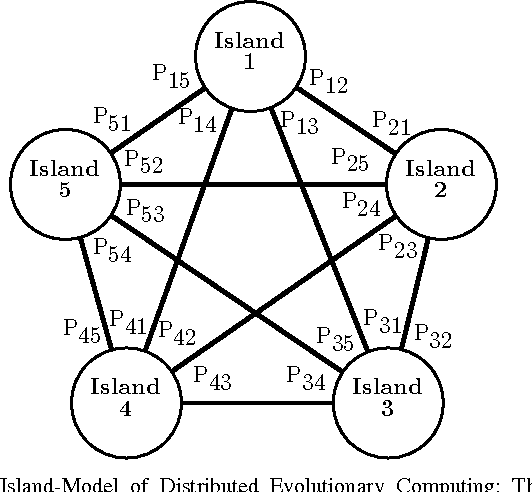
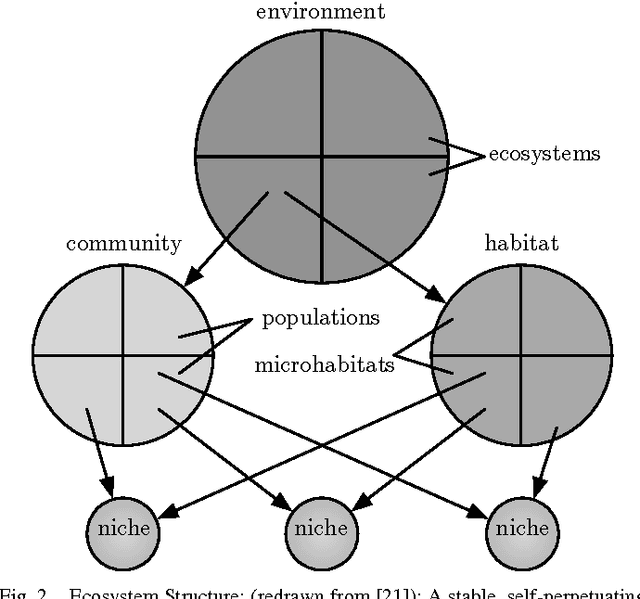
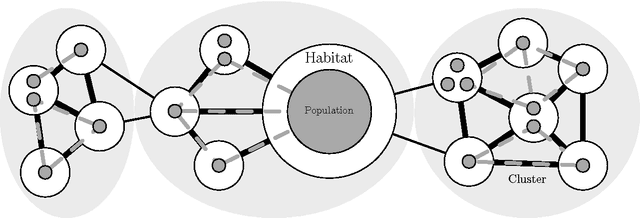
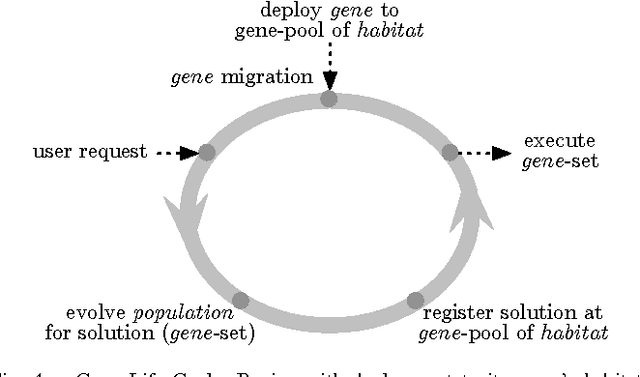
Abstract:We create a novel optimisation technique inspired by natural ecosystems, where the optimisation works at two levels: a first optimisation, migration of genes which are distributed in a peer-to-peer network, operating continuously in time; this process feeds a second optimisation based on evolutionary computing that operates locally on single peers and is aimed at finding solutions to satisfy locally relevant constraints. We consider from the domain of computer science distributed evolutionary computing, with the relevant theory from the domain of theoretical biology, including the fields of evolutionary and ecological theory, the topological structure of ecosystems, and evolutionary processes within distributed environments. We then define ecosystem- oriented distributed evolutionary computing, imbibed with the properties of self-organisation, scalability and sustainability from natural ecosystems, including a novel form of distributed evolu- tionary computing. Finally, we conclude with a discussion of the apparent compromises resulting from the hybrid model created, such as the network topology.
Self-Organisation of Evolving Agent Populations in Digital Ecosystems
Jan 24, 2012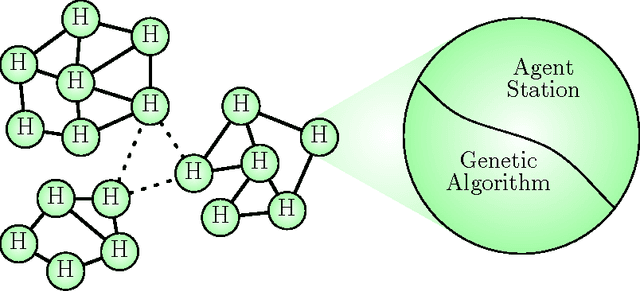
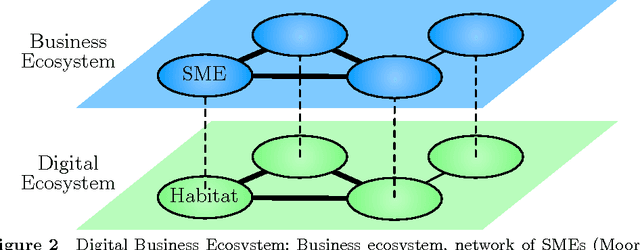


Abstract:We investigate the self-organising behaviour of Digital Ecosystems, because a primary motivation for our research is to exploit the self-organising properties of biological ecosystems. We extended a definition for the complexity, grounded in the biological sciences, providing a measure of the information in an organism's genome. Next, we extended a definition for the stability, originating from the computer sciences, based upon convergence to an equilibrium distribution. Finally, we investigated a definition for the diversity, relative to the selection pressures provided by the user requests. We conclude with a summary and discussion of the achievements, including the experimental results.
Digital Ecosystems: Ecosystem-Oriented Architectures
Dec 01, 2011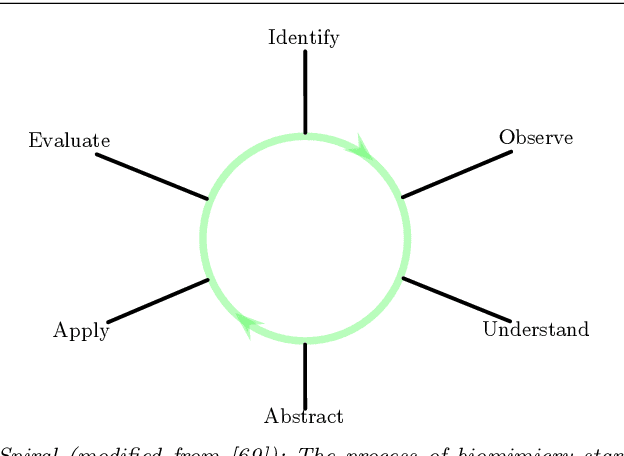
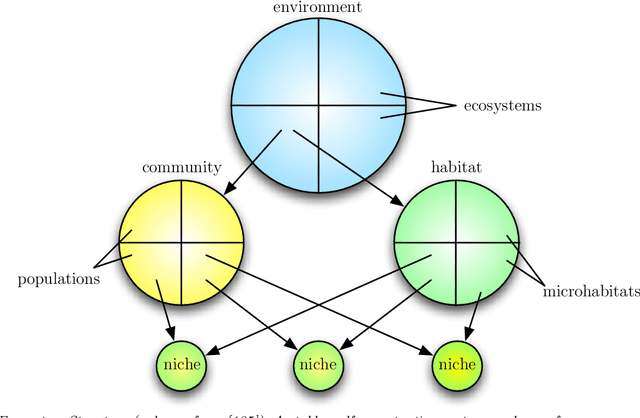
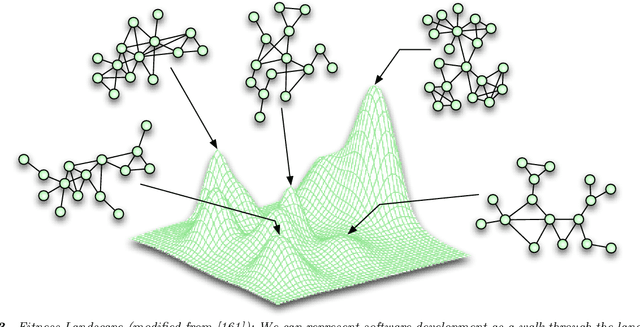
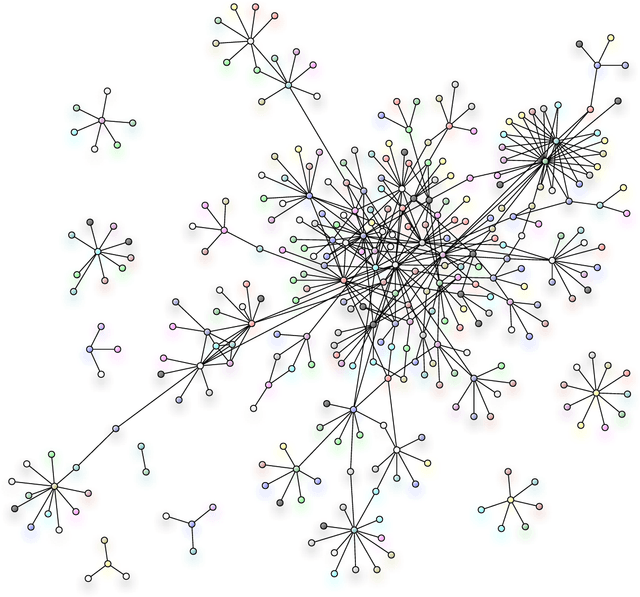
Abstract:We view Digital Ecosystems to be the digital counterparts of biological ecosystems. Here, we are concerned with the creation of these Digital Ecosystems, exploiting the self-organising properties of biological ecosystems to evolve high-level software applications. Therefore, we created the Digital Ecosystem, a novel optimisation technique inspired by biological ecosystems, where the optimisation works at two levels: a first optimisation, migration of agents which are distributed in a decentralised peer-to-peer network, operating continuously in time; this process feeds a second optimisation based on evolutionary computing that operates locally on single peers and is aimed at finding solutions to satisfy locally relevant constraints. The Digital Ecosystem was then measured experimentally through simulations, with measures originating from theoretical ecology, evaluating its likeness to biological ecosystems. This included its responsiveness to requests for applications from the user base, as a measure of the ecological succession (ecosystem maturity). Overall, we have advanced the understanding of Digital Ecosystems, creating Ecosystem-Oriented Architectures where the word ecosystem is more than just a metaphor.
Stability of Evolving Multi-Agent Systems
Nov 30, 2011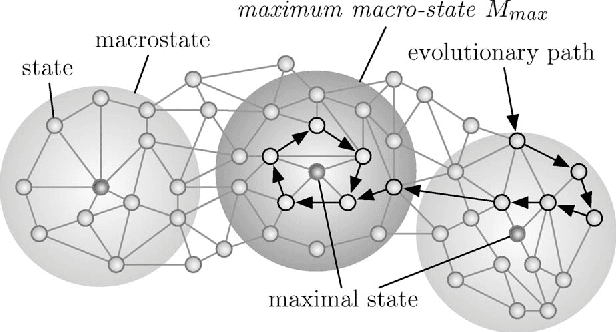
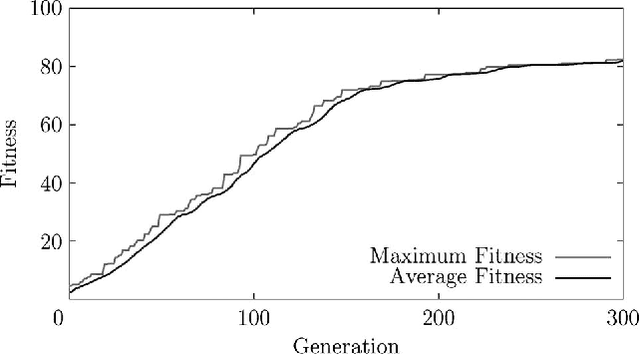
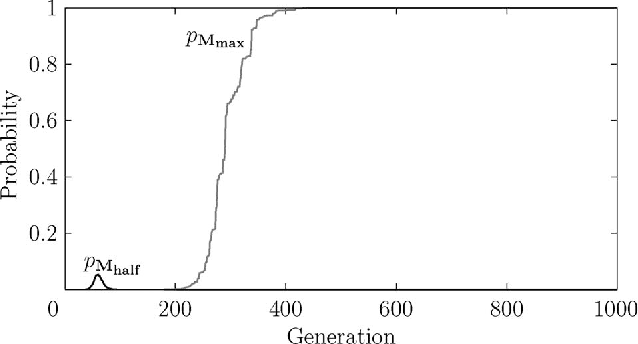
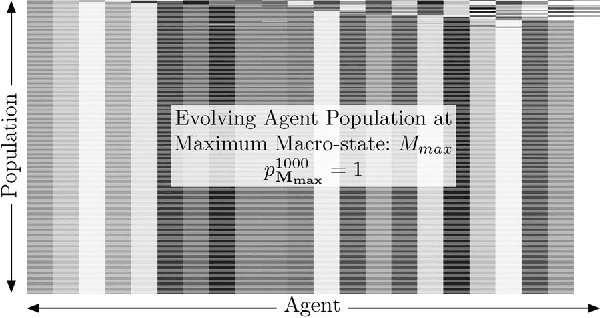
Abstract:A Multi-Agent System is a distributed system where the agents or nodes perform complex functions that cannot be written down in analytic form. Multi-Agent Systems are highly connected, and the information they contain is mostly stored in the connections. When agents update their state, they take into account the state of the other agents, and they have access to those states via the connections. There is also external, user-generated input into the Multi-Agent System. As so much information is stored in the connections, agents are often memory-less. This memory-less property, together with the randomness of the external input, has allowed us to model Multi-Agent Systems using Markov chains. In this paper, we look at Multi-Agent Systems that evolve, i.e. the number of agents varies according to the fitness of the individual agents. We extend our Markov chain model, and define stability. This is the start of a methodology to control Multi-Agent Systems. We then build upon this to construct an entropy-based definition for the degree of instability (entropy of the limit probabilities), which we used to perform a stability analysis. We then investigated the stability of evolving agent populations through simulation, and show that the results are consistent with the original definition of stability in non-evolving Multi-Agent Systems, proposed by Chli and De Wilde. This paper forms the theoretical basis for the construction of Digital Business Ecosystems, and applications have been reported elsewhere.
* 9 pages, 5 figures, journal
The Computing of Digital Ecosystems
Jan 28, 2011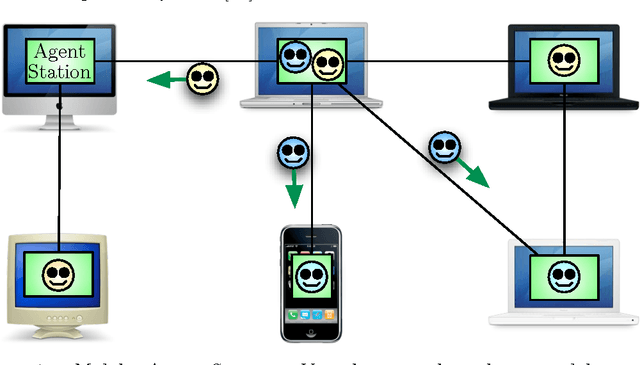
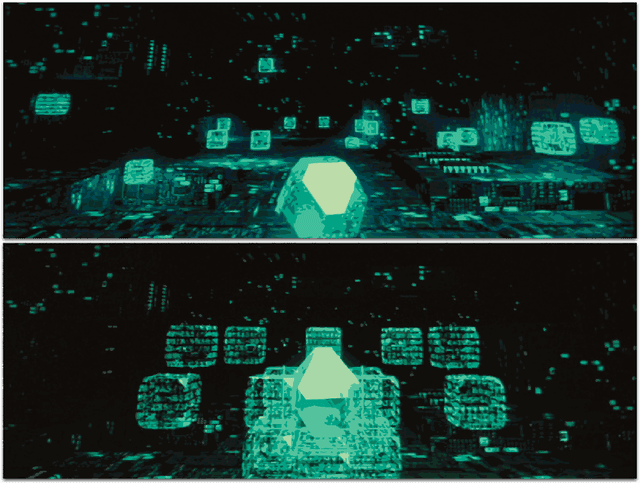
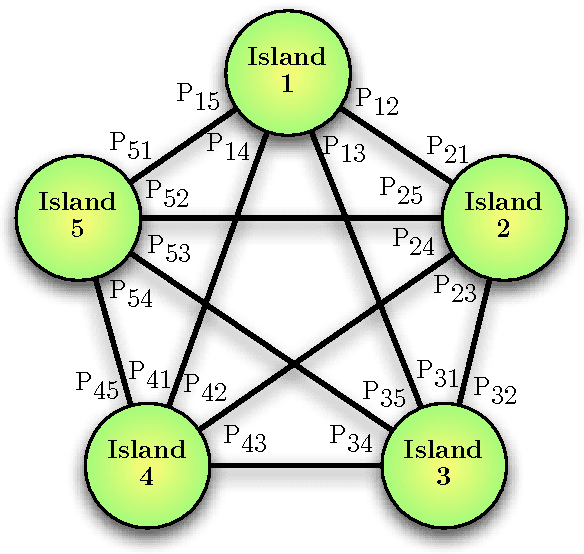
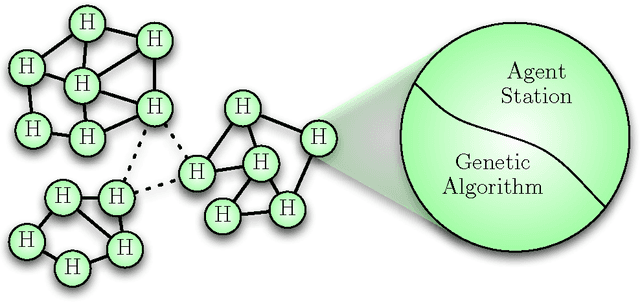
Abstract:A primary motivation for our research in digital ecosystems is the desire to exploit the self-organising properties of biological ecosystems. Ecosystems are thought to be robust, scalable architectures that can automatically solve complex, dynamic problems. However, the computing technologies that contribute to these properties have not been made explicit in digital ecosystems research. Here, we discuss how different computing technologies can contribute to providing the necessary self-organising features, including Multi-Agent Systems (MASs), Service-Oriented Architectures (SOAs), and distributed evolutionary computing (DEC). The potential for exploiting these properties in digital ecosystems is considered, suggesting how several key features of biological ecosystems can be exploited in Digital Ecosystems, and discussing how mimicking these features may assist in developing robust, scalable self-organising architectures. An example architecture, the Digital Ecosystem, is considered in detail. The Digital Ecosystem is then measured experimentally through simulations, considering the self-organised diversity of its evolving agent populations relative to the user request behaviour.
Digital Ecosystems
Oct 06, 2009



Abstract:We view Digital Ecosystems to be the digital counterparts of biological ecosystems, which are considered to be robust, self-organising and scalable architectures that can automatically solve complex, dynamic problems. So, this work is concerned with the creation, investigation, and optimisation of Digital Ecosystems, exploiting the self-organising properties of biological ecosystems. First, we created the Digital Ecosystem, a novel optimisation technique inspired by biological ecosystems, where the optimisation works at two levels: a first optimisation, migration of agents which are distributed in a decentralised peer-to-peer network, operating continuously in time; this process feeds a second optimisation based on evolutionary computing that operates locally on single peers and is aimed at finding solutions to satisfy locally relevant constraints. We then investigated its self-organising aspects, starting with an extension to the definition of Physical Complexity to include evolving agent populations. Next, we established stability of evolving agent populations over time, by extending the Chli-DeWilde definition of agent stability to include evolutionary dynamics. Further, we evaluated the diversity of the software agents within evolving agent populations. To conclude, we considered alternative augmentations to optimise and accelerate our Digital Ecosystem, by studying the accelerating effect of a clustering catalyst on the evolutionary dynamics. We also studied the optimising effect of targeted migration on the ecological dynamics, through the indirect and emergent optimisation of the agent migration patterns. Overall, we have advanced the understanding of creating Digital Ecosystems, the self-organisation that occurs within them, and the optimisation of their Ecosystem-Oriented Architecture.
Digital Ecosystems: Self-Organisation of Evolving Agent Populations
Oct 05, 2009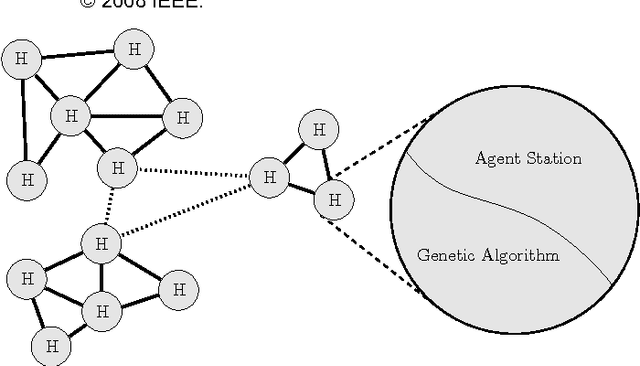
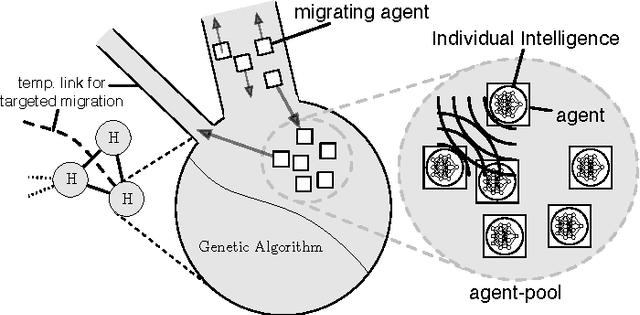
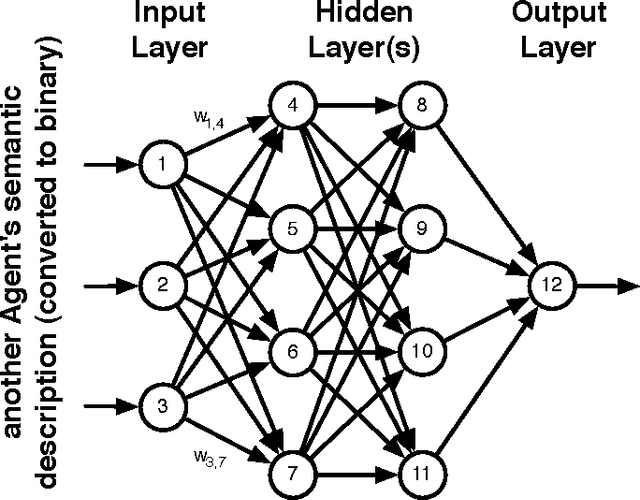
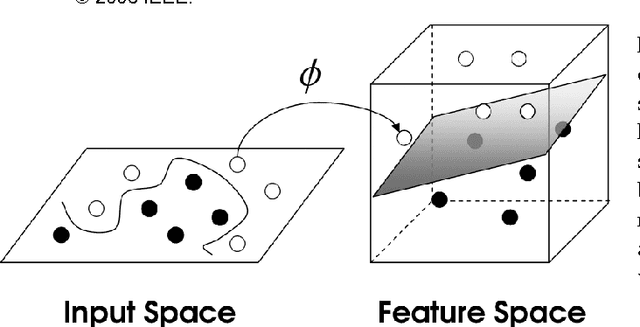
Abstract:A primary motivation for our research in Digital Ecosystems is the desire to exploit the self-organising properties of biological ecosystems. Ecosystems are thought to be robust, scalable architectures that can automatically solve complex, dynamic problems. Self-organisation is perhaps one of the most desirable features in the systems that we engineer, and it is important for us to be able to measure self-organising behaviour. We investigate the self-organising aspects of Digital Ecosystems, created through the application of evolutionary computing to Multi-Agent Systems (MASs), aiming to determine a macroscopic variable to characterise the self-organisation of the evolving agent populations within. We study a measure for the self-organisation called Physical Complexity; based on statistical physics, automata theory, and information theory, providing a measure of information relative to the randomness in an organism's genome, by calculating the entropy in a population. We investigate an extension to include populations of variable length, and then built upon this to construct an efficiency measure to investigate clustering within evolving agent populations. Overall an insight has been achieved into where and how self-organisation occurs in our Digital Ecosystem, and how it can be quantified.
Digital Business Ecosystems: Natural Science Paradigms
Oct 04, 2009Abstract:A primary motivation for research in Digital Ecosystems is the desire to exploit the self-organising properties of natural ecosystems. Ecosystems arc thought to be robust, scalable architectures that can automatically solve complex, dynamic problems. However, the biological processes that contribute to these properties have not been made explicit in Digital Ecosystem research. Here, we introduce how biological properties contribute to the self-organising features of natural ecosystems. These properties include populations of evolving agents, a complex dynamic environment, and spatial distributions which generate local interactions. The potential for exploiting these properties in artificial systems is then considered.
 Add to Chrome
Add to Chrome Add to Firefox
Add to Firefox Add to Edge
Add to Edge